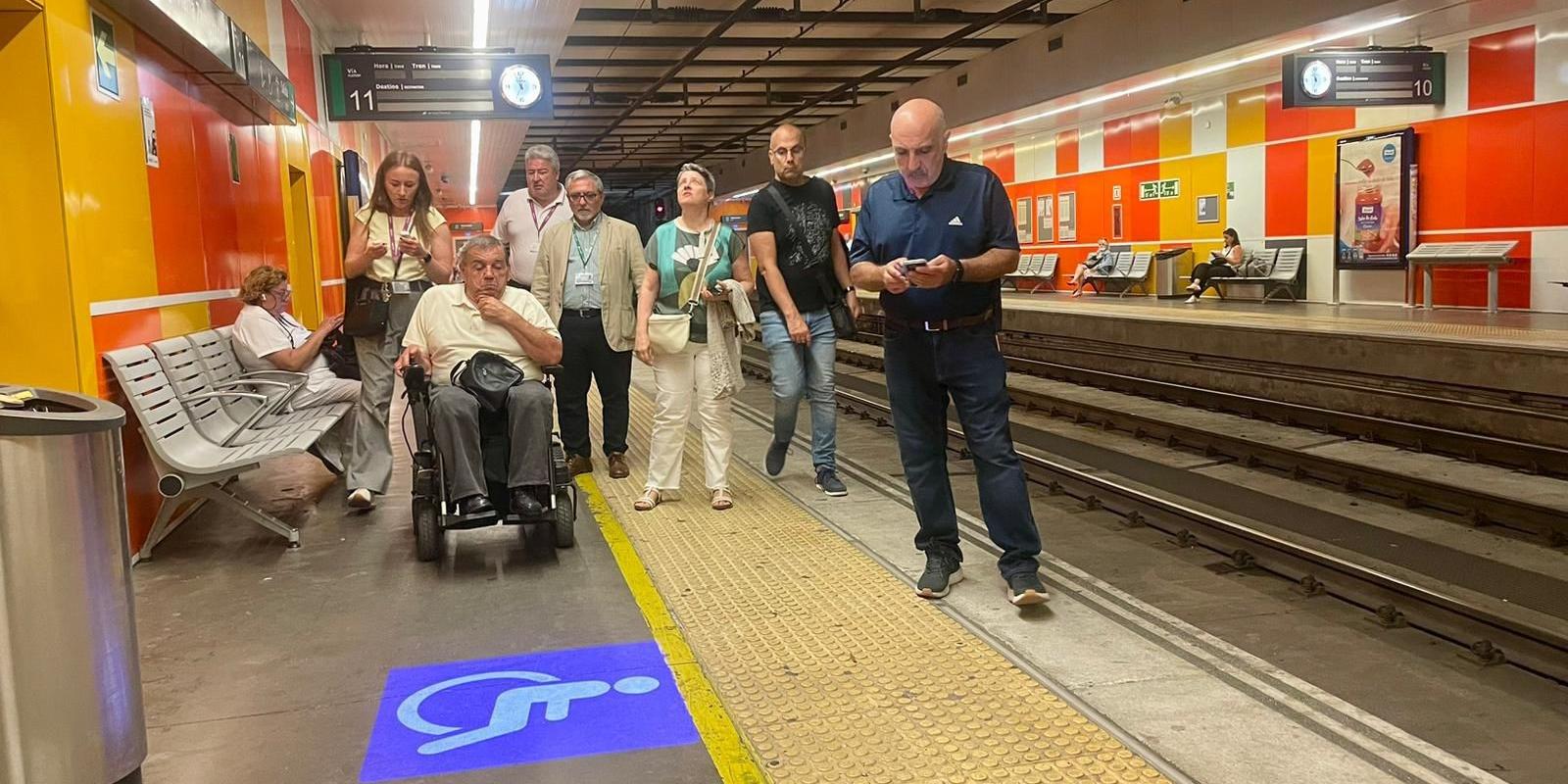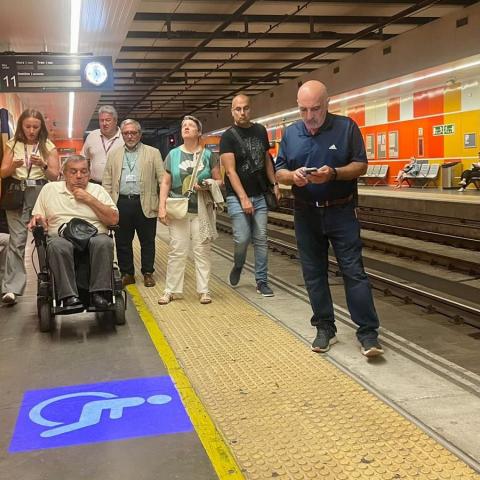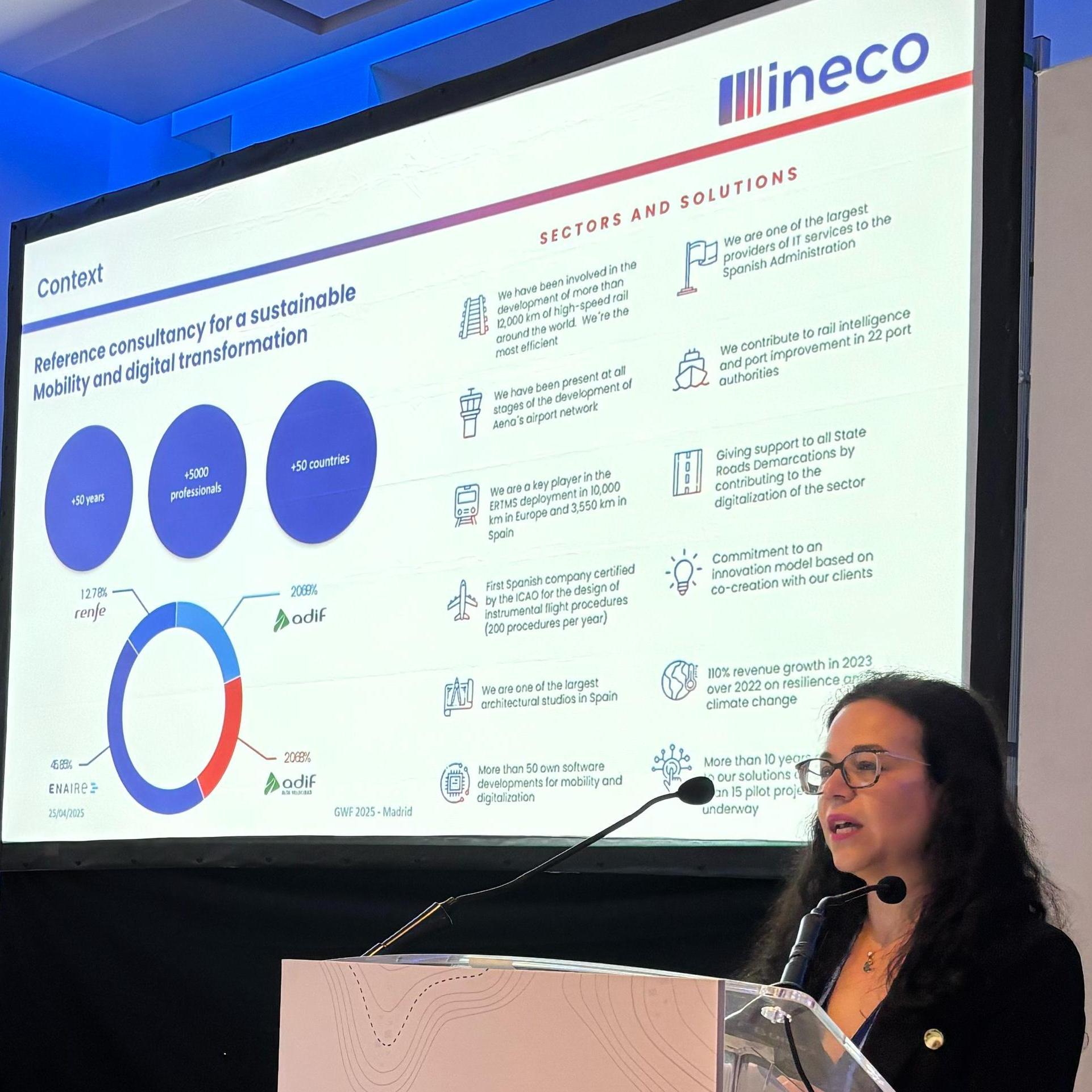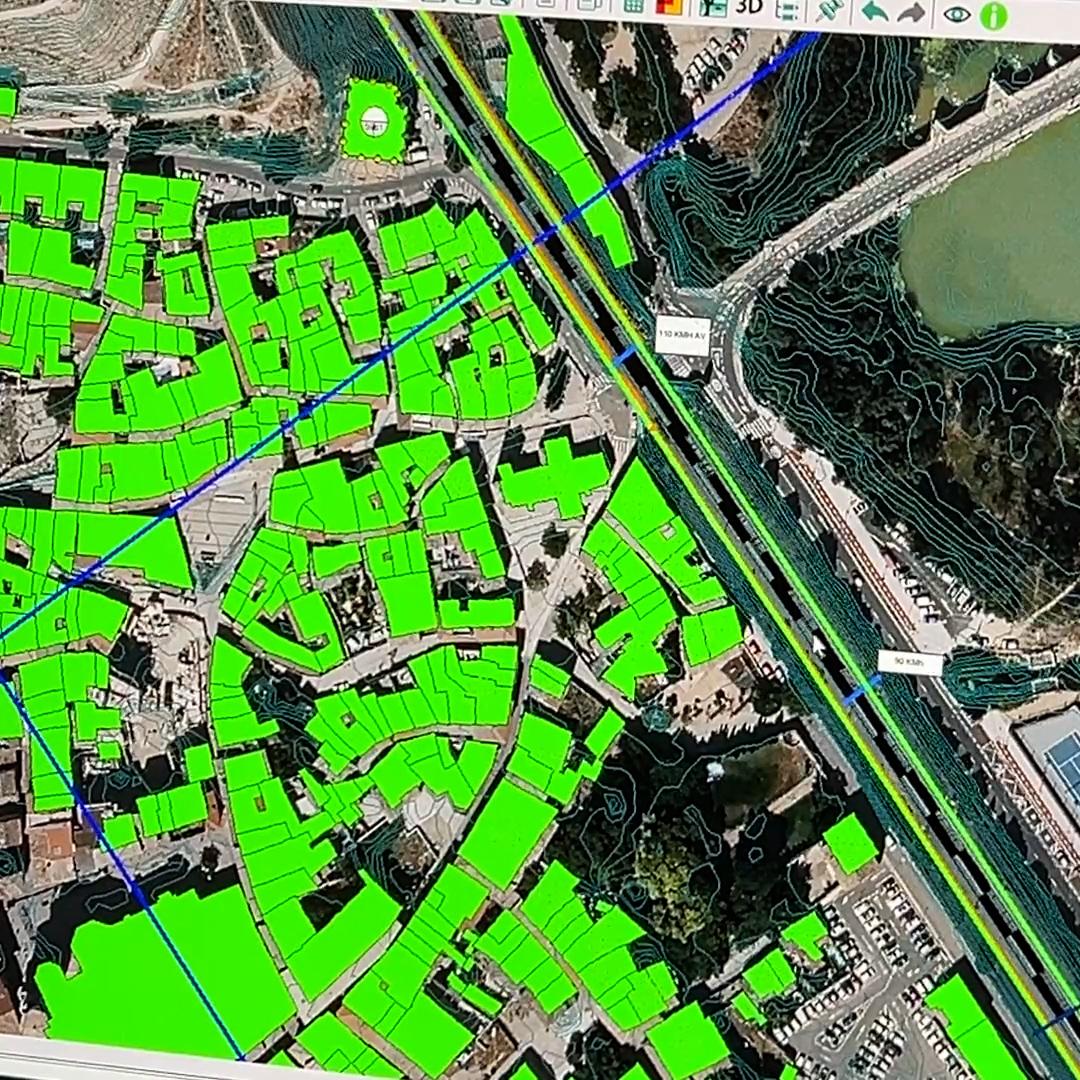
People with disabilities, railway staff, and specialized technicians participated in the validation
The Ministry of Transport and Sustainable Mobility, through Adif, Renfe, and Ineco, has initiated a pilot project aimed at improving railway accessibility for individuals with reduced mobility. The system, which has been validated at Málaga María Zambrano station, allows passengers to anticipate the location of the accessible train door through a light projection on the platform.
This pilot project is part of one of the six flagship projects of the European Rail Joint Undertaking (ERJU), the European Union’s partnership dedicated to rail transport, valued at €568.4 million. Members of the Ministry of Transport and Sustainable Mobility group participate in all these projects, led by Adif/Adif Alta Velocidad and including Renfe Operadora, Ineco, and Cedex as affiliated entities.
Through the ERJU initiative, efforts are underway over a ten-year period to converge the European railway system into a single, interoperable, sustainable, and efficient network, with a user-centered approach. Overall, research, development, and innovation activities will be implemented in line with the Ministry of Transport and Sustainable Mobility’s 2030 Strategy for Safe, Sustainable, and Connected Mobility.
Pilot Test at María Zambrano Station
The validated system is part of the ERJU initiative, specifically within the FP1-MOTIONAL project focused on network management and mobility in a multimodal environment. It involves an innovative solution consisting of light projectors that display the international accessibility symbol—a white wheelchair on a blue background—on the platform, visually indicating the access point to the train’s adapted car. This system aims to facilitate the early and autonomous positioning of people with reduced mobility (PRM), enhancing their travel experience.
For validation purposes, the system has been installed on two platforms at Málaga Cercanías station and was manually activated during testing, based on the actual train composition. People with disabilities, railway staff, and specialized technicians participated in the validation process, providing feedback on the system’s visibility, usefulness, and comprehensibility. This information will help assess the system’s impact and explore future scalability, including potential automation based on real-time data about train composition.
Additionally, as part of the FP1-MOTIONAL project, various validation events are scheduled in the coming months at Málaga station to test technologies aimed at enabling more autonomous, inclusive, and intelligent mobility in real-world settings. These include the installation of an assistance point, an accessibility kiosk, a tactile device offering personalized and accessible information on schedules, platforms, and interior routes, and even the possibility of requesting help from an assistive robot—another pilot initiative. The station will also be connected to a mobile guidance app that enhances the experience with tools such as Navilens codes (an accessible QR code designed for visually impaired users), accessible route visualization on maps, and ticket scanning functionalities.








